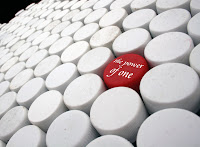From my understanding, no they are not. A few years ago when speaking to Visy, I found out that plastic lids are not recycled. One explanation I found for this recently is:
I am a recycle center supervisor in Traverse City. Lids cannot be recycled on water bottles (or any #1 plastic bottle) because the lids are not made out of #1 plastic. Therefore the lids cause contamination while the bottles are being recycled. unlike #2 plastic, #1 plastic, known as PET, can't have contaminants in it when it is recycled. (#2 can generally tolerate small amounts, such as lids, without destroying an entire batch) An entire batch of PET can be destroyed by just a little contamination.
Some of their tips are:
Refuse
Say NO to disposable plastics!
Reduce
Reduce your plastic footprint: buy in bulk, choose products with the least packaging, look for products and packaging made from renewable resources, and avoid plastic packaging and containers. Choose products that have the least amount of disposable parts.
Reuse
Reuse preferably nontoxic (glass, stainless steel) containers and goods to make less waste.
Recycle
Recycle what you can’t refuse, reduce or reuse. Recycling is a last option because it uses energy, and there may not be a market for the refabricated materials.
Upcycled term?
I prefer to use the term 'upcycled' as Wikipedia explains: 'Upcycling is the process of converting waste materials or useless products into new materials or products of b etter quality or a higher environmental value.'


